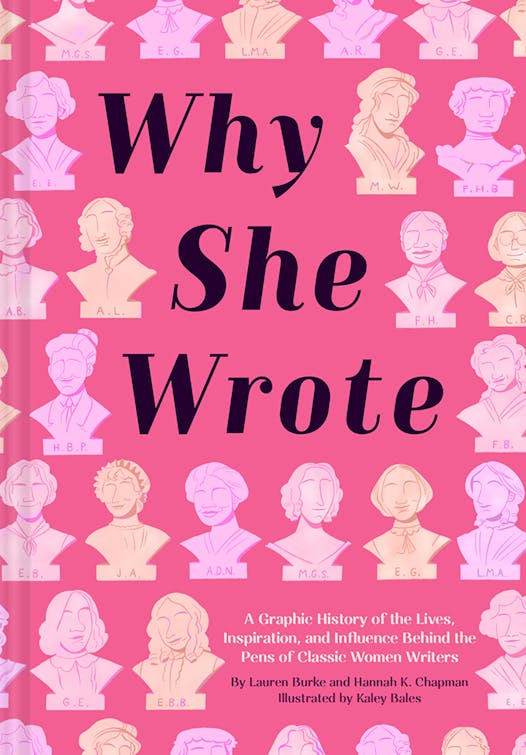Once again, women have taken over the better graphic novels I have for review. Let's meet them:
'Why She Wrote: The Graphic History of Classic Women Writers' (Written by Lauren Burke and Hannah Chapman, art by Kaley Bales, Chronicle Books, $19.95):
"Why She Wrote" is that rare book I can recommend without qualification. It has taught me a lot of history about famous female writers I was surprised to discover I didn't know. That is to say, in school I read books like "Jane Eyre" and "Wuthering Heights," but I didn't know much about the authors, or the environment in which the books were written (which is often necessary to understand them fully). I mean, I was probably in high school before I realized there was more than one Brontë!
That's an important void in my education, one this book actively corrects.
And what fun it is! I had no idea how much of "Frankenstein" was a metaphor for Mary Shelley's life and outlook. Or why Charlotte Brontë was so interested in women locked in attics. And here's a kicker: Since "Jane Eyre" mentioned Ann Radcliffe and her "The Mysteries of Udolpho," until yesterday o'clock I thought Radcliffe was a fictional character, like everyone else in the novel.
The art is a bit on the cartoony side, but attractive and flexible enough to cover the different eras, fashions and concepts involved. Recommended.
'The Curie Society TPB' (Written by Janet Harvey, illustrated by Sonia Liao and Johanna Taylor, MIT Press, $18.95):
When teen science prodigies Maya, Simone and Taj become roommates at (the fictional) Edmonds University, they are inducted into the all-female, all-scientist Curie Society. The secret organization was founded in 1903, we are told, so "brilliant women could pursue the furthest reaches of their intellect."
The three have to pool their skills to join the society, which is just phase one. Phase two is the "save the world from evil scientists" part, which is more or less standard teen-detective action/adventure. But with STEM! Which is what elevates this book above genre formula.
Honestly, the plot is pretty familiar, as is the After-School Special lesson that our fractious heroines have to learn to work together to achieve their aims. The girls are all multiculti, and one of them isn't on the gender binary. That's almost standard procedure these days.
What sets "Curie Society" apart from all its "Encyclopedia Brown"/"Hardy Boys" young-adult brethren is A) all the good guys are gals, B) the girls are well developed as individual characters and C) real-world science is involved at every turn. Like "The Martian" — which the catalog copy actually references as an inspiration — our fledgling heroes have to employ real science. The book also includes biographical data on the scientists mentioned and the book's science advisers, as well as a glossary of science terminology.
If I had a daughter in middle school, this book would be in her library. There aren't enough books to inspire girls about math, science and technology (although that's changing), so I welcome this one.
The summer after Barbenheimer and the strikes, Hollywood charts a new course

Gophers football coach P.J. Fleck lists 'resort-style' Edina home for $3.9 million
Mexican film wins top prize at Moscow International Film Festival while major studios boycott Russia
Why you might have heard Paul Simon's 'The Sound of Silence' at Spanish Mass



